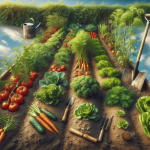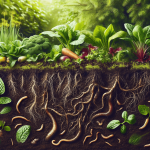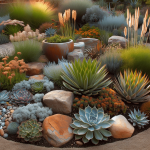This post may contain affiliate links. As an Amazon Associate, we may earn commissions from qualifying purchases.
Have you ever wondered how you can make the most out of your garden, even when you live in a cold climate? You’re certainly not alone! Many gardeners face the same challenge, but the good news is that there are several strategies you can use to extend your growing season, ensuring you reap a bountiful harvest despite the chilly weather. In this article, let’s explore the most effective methods to keep your garden productive for as long as possible, no matter how cold it gets.
Understanding Your Local Climate
Before diving into the various techniques, it’s crucial to understand your specific growing environment. Familiarize yourself with your area’s hardiness zone and typical frost dates. This knowledge will help you plan effectively and choose the right methods to extend your growing season.
Hardiness Zones
The USDA Plant Hardiness Zone Map is an invaluable tool for gardeners. This map divides the United States into zones based on the average annual minimum winter temperature. By knowing your zone, you can select plants that are more likely to thrive in your climate.
Frost Dates
Equally important are the average first and last frost dates in your area. These dates mark the beginning and end of the growing season, respectively. With these in mind, you’ll know when to start preparing your garden for cold weather.
Season Extenders
Season extenders are tools and techniques designed to protect your crops from unexpected frosts and prolong the growing period. They can range from simple and inexpensive to more complex and costly solutions.
Row Covers
Row covers are lightweight fabric sheets that can be draped over your plants to shield them from frost. They allow light and water to penetrate while providing a layer of insulation against the cold.
| Type of Row Cover | Benefits | Drawbacks |
|---|---|---|
| Lightweight (0.5-0.6 oz.) | Protects from light frosts, up to 4°F warmer | Less durable, may not withstand heavy winds |
| Medium-weight (0.9-1.2 oz.) | Offers better frost protection, up to 6°F warmer | Reduced light transmission |
| Heavy-weight (1.5-2.0 oz.) | Provides maximum frost protection, up to 8°F warmer | Significantly lower light transmission, may require venting |
Cold Frames
Cold frames are essentially mini-greenhouses that trap solar energy to create a warmer microclimate for your plants. They can be constructed from materials like wood, metal, or even recycled windows.
Building a Cold Frame
To build a simple cold frame, follow these steps:
- Select a sunny location with well-draining soil.
- Construct a rectangular base using untreated wood or bricks.
- Create a hinged top using glass or clear plastic to allow sunlight in and provide easy access to your plants.
- Ensure the top slopes slightly to prevent water accumulation.
Greenhouses
Greenhouses are more permanent structures that offer a highly controlled environment for your plants. They can be heated or unheated, depending on your needs and budget.
| Type of Greenhouse | Benefits | Drawbacks |
|---|---|---|
| Unheated (Cold) | Lower cost, less energy usage | Limited protection during extreme cold |
| Heated | Year-round growing potential | Higher initial cost and ongoing energy expenses |
Hoop Houses
Hoop houses, also known as high tunnels, are essentially larger versions of row covers, made from metal or PVC hoops and covered with plastic sheeting. They provide a similar protective environment as greenhouses but are generally less expensive and easier to construct.
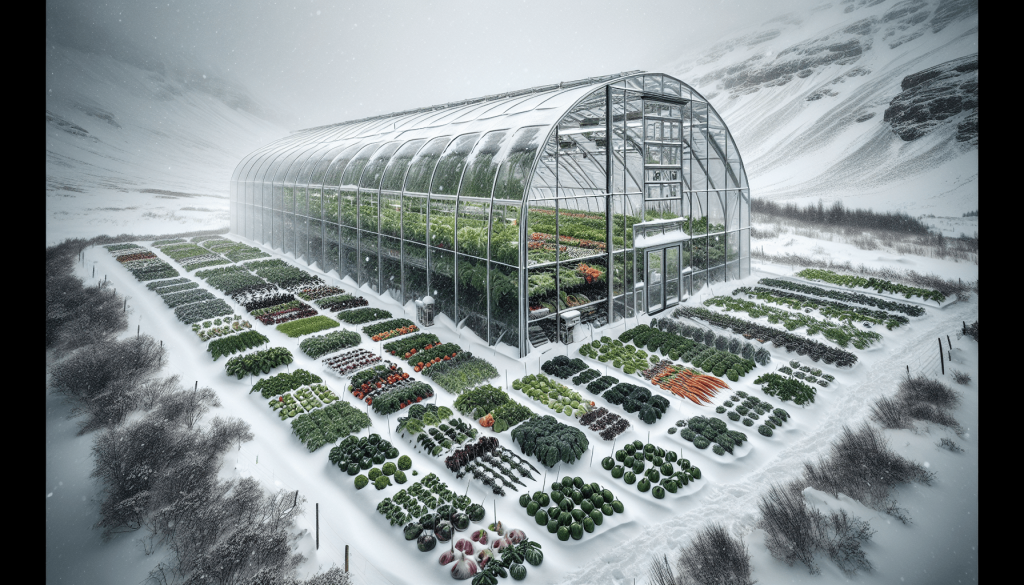
Soil Preparation
Healthy soil is the foundation of a thriving garden, especially in a cold climate. Proper soil preparation can make a significant difference in your plants’ ability to withstand cooler temperatures.
Compost
Incorporating compost into your garden not only enriches the soil with nutrients but also improves its structure and moisture retention. Spread a layer of compost onto your garden beds and gently work it into the soil.
Mulching
Mulching helps regulate soil temperature and moisture levels, providing an additional layer of insulation for your plants’ roots. Use organic materials like straw, shredded leaves, or wood chips.
Plant Selection and Timing
Choosing the right plants and planting them at the optimal time can greatly impact your success in extending the growing season.
Cold-Hardy Vegetables
Some vegetables are naturally more tolerant of cold temperatures. Consider planting these cold-hardy varieties:
| Vegetable | Ideal Planting Time | Hardiness Zone |
|---|---|---|
| Kale | Early spring, fall | Zones 3-9 |
| Spinach | Early spring, fall | Zones 2-9 |
| Carrots | Early spring, fall | Zones 2-11 |
| Brussels Sprouts | Mid-summer for fall harvest | Zones 2-9 |
| Garlic | Fall | Zones 3-8 |
Succession Planting
Succession planting is a technique where you plant crops in intervals to ensure a continuous harvest throughout the growing season. By doing this, you can make the most of your garden space and extend your harvest well into the colder months.
How to Succession Plant
- Determine your last frost date and count backward based on your chosen crops’ maturity times.
- Stagger the planting of crops every two to three weeks.
- Replace harvested crops with new plantings of compatible, cold-tolerant varieties.
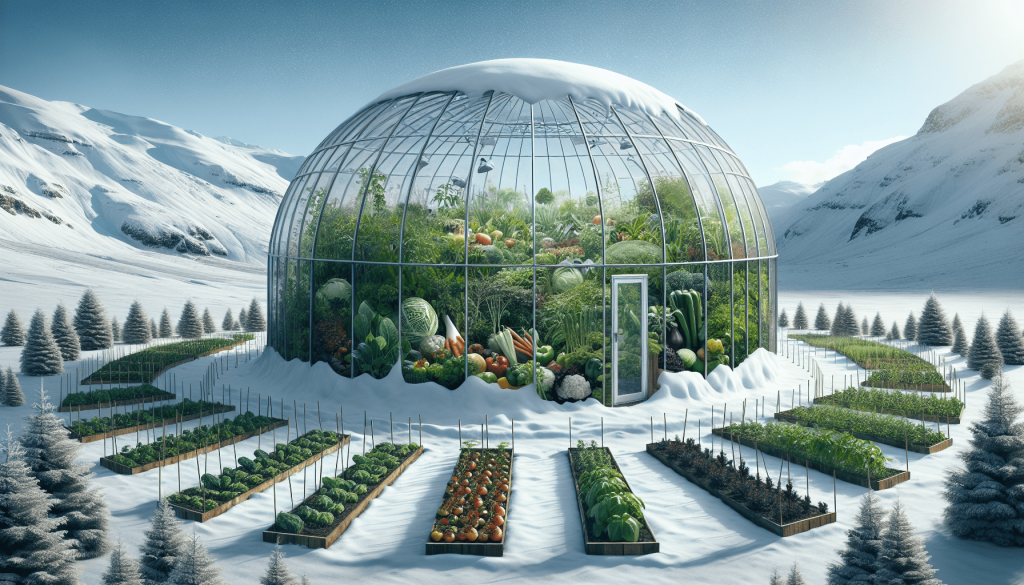
Microclimates and Indoor Growing
Creating microclimates in your garden or moving some of your gardening indoors are excellent ways to extend the growing season.
Creating Microclimates
By strategically placing windbreaks, using reflective surfaces, and utilizing south-facing slopes, you can create warmer conditions in specific areas of your garden. These microclimates can make a significant difference, giving you an extended growing season.
| Technique | Description | Benefits |
|---|---|---|
| Windbreaks | Planting shrubs or erecting fences | Reduces wind chill, protects plants from cold winds |
| Reflective Surfaces | Using materials like aluminum foil or white paint | Redirects sunlight to plants, increases warmth |
| South-Facing Slopes | Planting on slopes facing the south | Maximizes sun exposure, retains heat |
Indoor Growing
If outdoor gardening becomes too challenging, consider growing cold-sensitive plants indoors. Options include:
Windowsill Gardens
Grow herbs and small vegetables on a sunny windowsill. You’ll be surprised how much you can grow in a small space!
Indoor Grow Lights
Invest in grow lights to provide the necessary light spectrum for your plants to thrive indoors. This method allows you to grow a wide variety of plants year-round.
Watering and Fertilization
Watering and fertilizing your garden correctly in a cold climate is essential for plant health. Overwatering can lead to root rot, while under-watering can stress your plants.
Proper Watering Techniques
- Water early in the day to allow plants to dry before nighttime temperatures drop.
- Use soaker hoses or drip irrigation to deliver water directly to the plant roots, reducing evaporation and fungal risk.
- Monitor soil moisture regularly and adjust your watering schedule as needed.
Fertilization
Cold temperatures can slow down nutrient uptake in plants, so providing a balanced fertilizer is important. Use a slow-release fertilizer to ensure your plants receive a steady supply of nutrients throughout the season.
Protection from Pests
Cold weather does not deter pests from seeking out your garden. In fact, some pests may become more persistent as they search for food sources.
Natural Pest Control Methods
- Introduce beneficial insects like ladybugs and predatory beetles to help control pest populations.
- Use organic pesticides when necessary, but always follow the instructions to minimize harm to beneficial insects and the environment.
- Employ physical barriers such as netting or cloches to protect your plants from pest damage.
Concluding Thoughts
Extending the growing season in a cold climate may seem daunting at first, but with these strategies, you’re well-equipped to face the challenges head-on. By understanding your local climate, choosing the right season extenders, preparing your soil, selecting cold-hardy plants, and utilizing microclimates and indoor growing techniques, you can enjoy a productive garden even in the chilliest months. So, roll up those sleeves, brave the cold, and let this growing season be your best one yet!
As your garden journey progresses, remember to stay adaptable and keep experimenting. Gardening in a cold climate requires patience, but with persistence and the right techniques, you’ll find great success. Here’s to a longer, more fruitful growing season!

